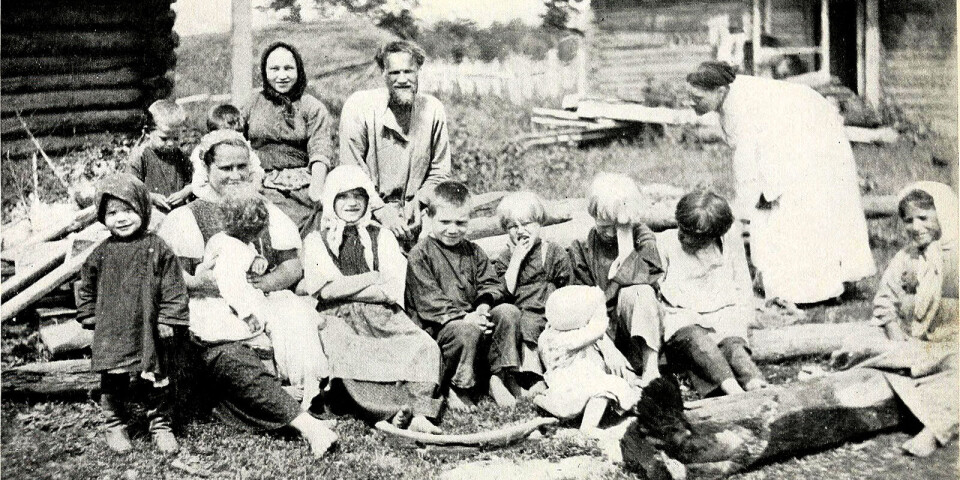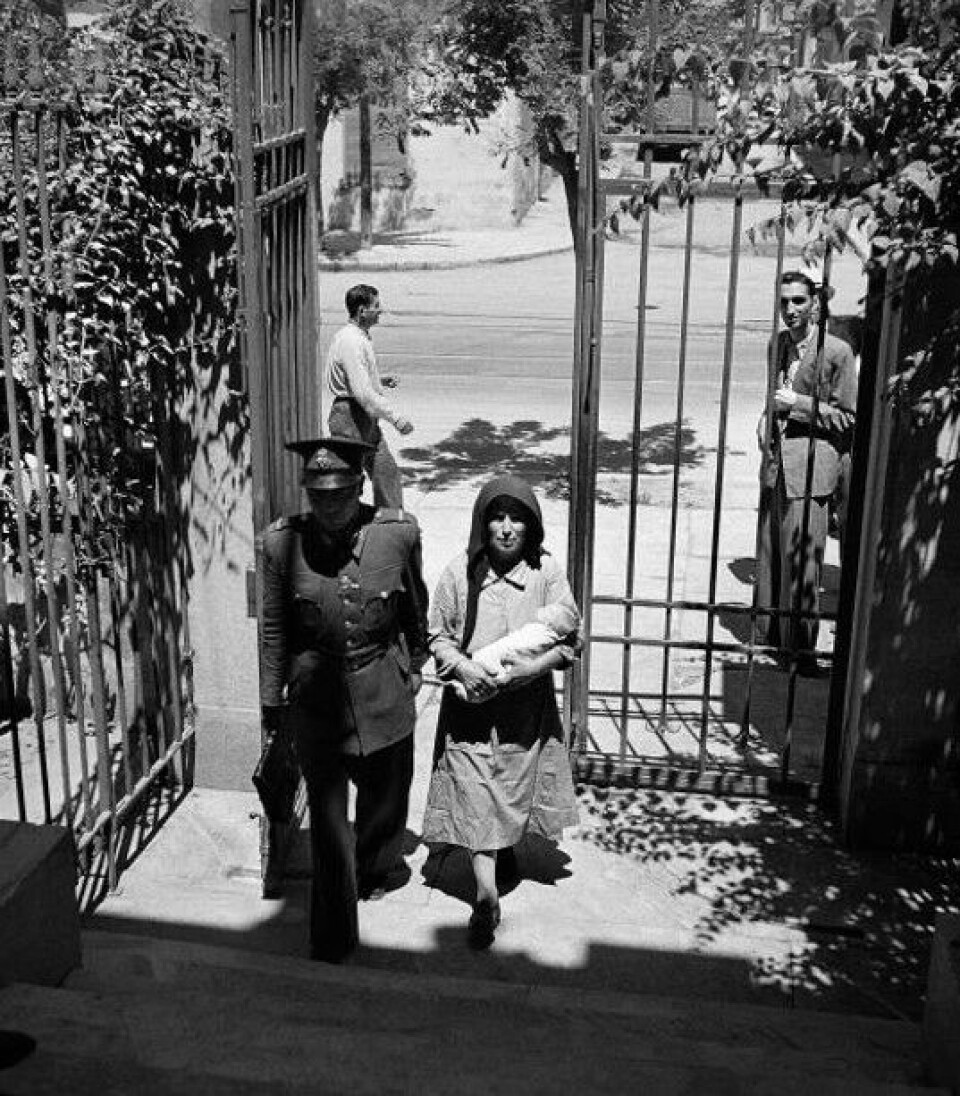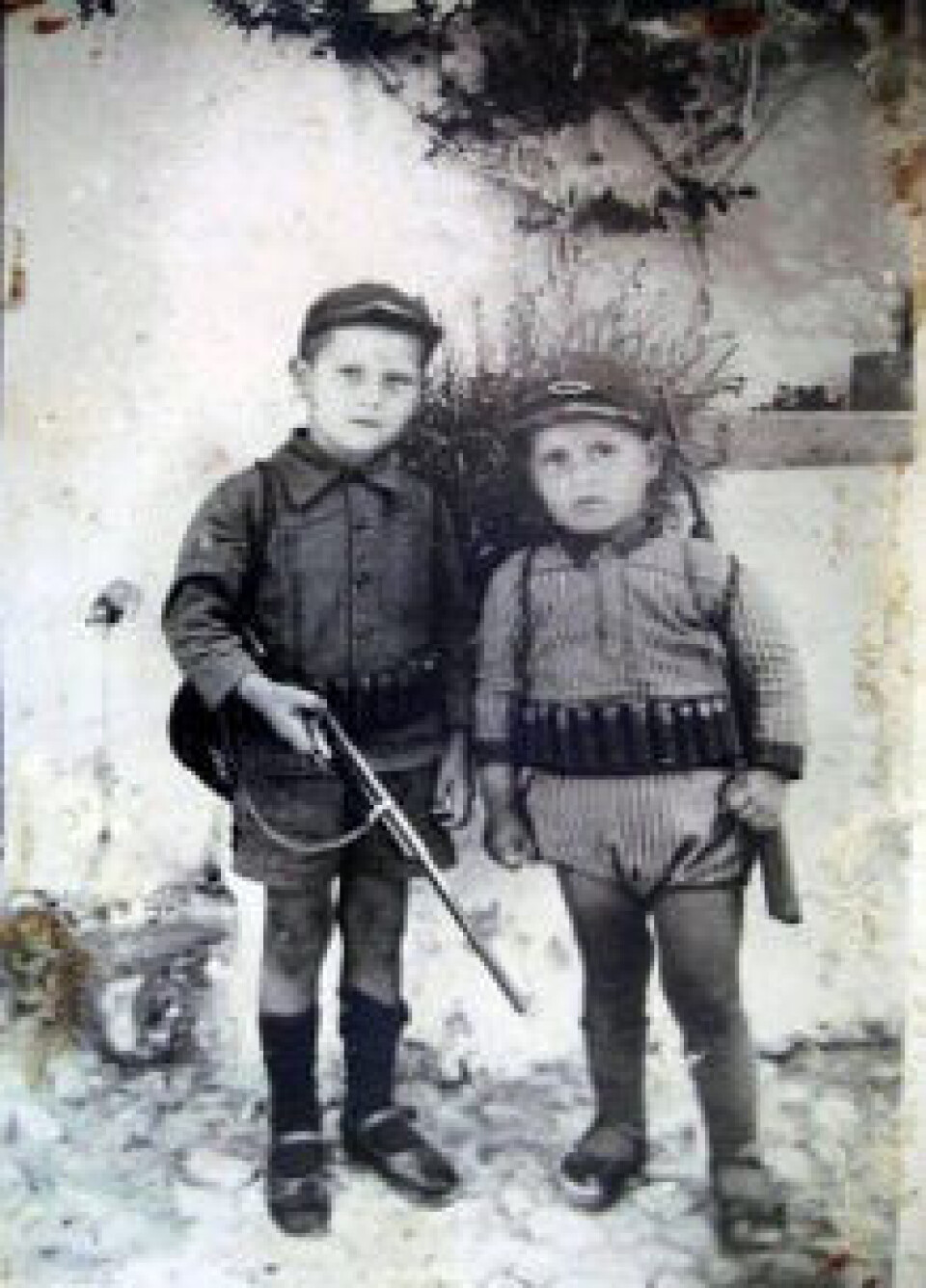THIS CONTENT IS BROUGHT TO YOU BY NTNU Norwegian University of Science and Technology - read more

Why did so many girls die?
Far more female infants than male infants died in Europe from 1700–1950. Researchers have been investigating why.
Researchers at NTNU have looked into numbers of girls and boys in European countries over a 250-year period. They found that the number of male children was higher in several countries during periods of poverty and poor living conditions.
The researchers noticed this trend in Southern and Eastern European countries. It was most obvious in Greece, but can also be seen in Norway.
“We found similar patterns in all of these countries, albeit to varying degrees. In the other European countries, the problem was minimal,” says Francisco Beltrán Tapia.

He is a professor of history at NTNU and is leading the research project Missing Girls in Historical Europe.
Spanish school statistics
Tapia first noticed the phenomenon while researching gender distribution among school-age children in Spain throughout history.
He discovered that in some regions and in some periods, there were significantly more boys than girls. This piqued his interest, and the researchers decided to consider all of Europe in their project.
The research project is examining whether discriminatory practices increased female mortality rates during infancy and childhood in Europe from 1700 to 1950.
Girls have a biological advantage
Girls have a natural biological advantage when it comes to survival from the foetal stage onwards. The majority of stillbirths and miscarriages are boys. Baby boys are also more vulnerable to stress than baby girls, and more prone to diseases.
Females are also better equipped to survive famine and epidemics. An international research team established this by studying historical data from seven different crises that have occurred over the past 250 years.
Despite this, the source material collected during Missing Girls shows that more girls than boys died during certain periods in some European countries and regions.
But why?

Boys were prioritised and given more food
The reason is that boys experienced better living conditions and were prioritised by their parents during difficult periods of poverty and famine. Boys were given more food than girls, mothers tended to breastfeed boys longer, and boys received better care and living conditions.
In environments with high mortality rates, the way girls were treated when they got sick, as well as the amount of work they were required to do, could have led to more of them dying from the combined effects of malnutrition and disease.
This was not true for all families, of course, but the numbers speak for themselves. The researchers collected their data by examining censuses, population statistics, birth records, and death records.
They have also looked at the number of abandoned infants who ended up at orphanages. It turns out that the majority were girls during difficult periods, especially in certain parts of Europe.

Widespread phenomenon in Asia
This is a known phenomenon in some Asian countries.
“Gender discrimination in the form of sex-selective abortion, the killing of female infants, and fatal neglect of young girls is found in developing countries, especially in South and East Asia,” Tapia says.
The Indian economist, philosopher, and Nobel laureate Amartya Sen, helped highlight this problem 30 years ago.

“Economic and cultural factors have influenced the perception of women’s value in these regions for a long time, resulting in millions of 'missing girls'. We have now found that the same phenomenon has also been far more prevalent in Europe than previously thought, especially in Southern and Eastern Europe,” the researcher says.
Girls were an economic burden
Boys were considered more valuable than girls. In recent European history, this is most clearly expressed in Greece.
Boys were able to get work and contribute to the family economy. Girls’ and women’s work in the home was not valued or considered financially profitable.
“We find descriptions of girls being of less value in stories and songs from Greek folklore. Girls were often considered a burden,” the researcher says.
One important aspect was the traditional practice of marrying girls off, which meant that the girl’s family had to pay a dowry.
In other words, girls were expensive.
“A strong preference for sons clearly increased female mortality around childbirth and throughout infancy and childhood in Greece, at least until the 1920s. Our estimates indicate that more than 5 per cent of girls ‘disappeared’ between 1861 and 1920,” says Tapia.
A strict patriarchal system
Researcher Eftychia Kalaitzidou has focused on Greece and reviewed interviews of elderly people from the 1970s and 1980s. They said that the birth of a baby girl was not met with much enthusiasm; usually quite the opposite.
“In Greece, we found that the family system was a clear cause of sexist practices,” says Tapia.
This was evident in various case studies.
"This view is supported by a large body of qualitative evidence such as contemporary accounts, folklore traditions, and anthropological studies. These all highlight the fact that girls were neglected because of their lower status in society,” he says.
“The Greek findings reflect some of the conditions that have been associated with female neglect in South and East Asia, namely a strong patriarchal system based on strict kinship and dowry systems."
In the late 19th and early 20th centuries, many Greek men emigrated from Greece. This further weakened women’s position in the marriage market due to a shortage of potential husbands.
“It's likely that female status was also weakened by a fear of conflicts and blood feuds, a trait that was reinforced by the concept of honour that was characteristic of Greek culture and other Mediterranean cultures,” the researcher says.
Also evident in Spain
These practices are also evident in Spain in the 19th century, although they are less extreme.
“Extensive church records actually give a more detailed picture. They confirm not only that some families neglected their female babies, but also that sexist practices continued throughout childhood,” says Tapia.
However, this behaviour was less prominent during the first year of life. This is related to the fact that once babies were accepted into the family, they were protected by breastfeeding. Gender differences in mortality rates clearly re-emerged when the children were weaned.
“Discriminatory practices seem to have been part of a generalised cultural system that favoured boys in terms of access to food and care. However, the findings appear to be most prevalent among poor, landless families who were exposed to harsh economic conditions,” he says.

The Spanish Civil War
This phenomenon is evident in Spain until the 1940s. This is due to the Spanish Civil War from 1936 to 1939. It led to widespread poverty in the country.
There was extensive rationing in Spain in the first decade after the civil war. Agriculture was decimated, and there was a severe shortage of food. Lack of fuel made the distribution of basic products difficult.
Infanticide and child marriage
Information on more than 300 populations in historical Europe taken from the Mosaic project shows that gender differences among children tended to be greater in places with patrilocal norms. This is where women were married at a young age and couples lived near or in the same house as the husband’s parents.
“The intensity of patriarchal values explains much of the regional differences,” Tapia says.
It was also not unheard of for female babies to be killed by their parents.
“This aspect probably gets the most attention, but it's just a small part of the whole picture. It's the other mechanisms that had the greatest impact: That girls got less food, often shorter breastfeeding periods, poorer care, and generally worse living conditions than boys,” he says.
What happened in Norway?
Researcher Marko Kovacevic has investigated Norwegian population statistics. The phenomenon has not been so widespread in Norway. However, during periods of severe food shortages in the 18th century, researchers see the same tendency where boys were prioritised and likely to be given more food than girls.
1741 was a terrible year in Norway. Grain crops and other harvests failed. It was the start of a famine that led to many people dying of starvation. Those who survived were severely malnourished, and many died from dysentery.
From 1741 to 1743, there were 50 per cent more deaths than births, and the population decreased by 3.5 per cent. More girls than boys died during this period – despite the fact that girls have a biological advantage in terms of survival.
Marko Kovacevic’s study of the situation in Norway will eventually be published in book form.
Girls and education
Discriminatory patterns affecting women’s mortality early in life disappeared during the first decades of the 20th century in Europe. As economic, social, and cultural changes improved the standard of living, overall mortality rates declined and undermined the son preference.
An improved standard of living and long-term efforts to improve gender equality also gave girls and women better access to education. This led to financial independence, knowledge, increased status, and better health.
Nowadays, in many countries, women make up the majority of people taking higher education.
References:
Echavarri, R. & Tapia, F.J.B. Economic development, female wages and missing female births in Spain, 1900–1930, Cliometrica, 2023.
Tapia, F.J.B. Sex ratios and missing girls in historical Europe, Long-run Health Matters, 2022.
Tapia, F.J.B. & Cappelli, G. Missing girls in Liberal Italy, 1861-1921, The Economic History Review, 2023. DOI: 10.1111/ehr.13257
Tapia, F.J.B. & Szoltysek, M. ‘Missing girls’ in historical Europe: reopening the debate, The History of the Family, vol. 27, 2022. DOI: 10.1080/1081602X.2022.2132979
Zarulli et al. Women live longer than men even during severe famines and epidemics, PNAS, 2018. DOI: 10.1073/pnas.1701535115
———
Read the Norwegian version of this article on forskning.no
More content from NTNU:
-
More than 120,000 Norwegians suffer from work-related anxiety
-
Forever chemicals affect ducklings' genes while they are still in the egg
-
Why are pregnant women in Norway so worried?
-
Politics on Facebook: Populist parties choose divisive issues on purpose
-
Social media is connected to cyberbullying – but not how we thought
-
Forskere ved NTNU får nesten 24 millioner av EU for å lage nye strømomformere





































